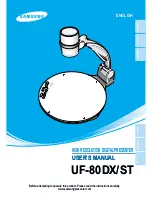
46
VQT2R20
VQT2R20
47
Changing recording information display
Taking pictures with flash
Recording Mode:
Change between different LCD monitor displays, such as Histograms.
■
Histogram
Displays distribution of brightness in picture
– e.g. if the graph peaks at the right, this means there are
several bright areas in the picture. (Guide) A peak in the center
represents correct brightness (correct exposure). This can be
used as a reference for exposure correction (
→
53), etc.
• Histogram from time of recording is different to Histogram
in playback and displayed in orange, when recording with
flash or in dark locations. Also, Histogram may differ from
Histograms made with image editing software.
• Not displayed during
([INTELLIGENT AUTO] Mode),
([CLIPBOARD] Mode), [MULTI
ASPECT], [PHOTO FRAME] or Playback Zoom.
■
Guide lines
• Reference for composition (e.g. balance) when
recording.
• [INTELLIGENT AUTO] Mode and [CLIPBOARD]
Mode display
only.
• This is not displayed in [MULTI ASPECT] Mode.
●
Judge balance
●
Judge center of
subject
●
During Playback Zoom, Motion Picture Playback, Slide Show: Display on/off.
●
During menu display, Multi Playback or Calendar Playback: Display cannot be changed.
(Example)
OK
Dark
←
→
Bright
Press to change display
●
In Recording Mode
Recording
information
∗
1
Motion picture recording
information
∗
1,
∗
2
No display
Guide lines
∗
1,
∗
3
●
In Playback Mode
∗
1
Set [HISTOGRAM] to [ON] to display
Histogram (
→
23).
∗
2
• Return to the ‘Recording
information’ display by pressing the
shutter button halfway.
• Displayed when recording motion
pictures instead of the left screen.
∗
3
Select Guide line pattern and
recording information display on/off
with [GUIDE LINE] setting (
→
23).
• When
is in use, recording
information and Guide lines cannot
be displayed simultaneously.
Recording
information
Recording information
or Histogram
∗
1
No display
Display [FLASH]
Select the desired type
Can also be
selected with
►
.
(Example displayed about 5
seconds, [PROGRAM AE] Mode
(
))
Type, operations
Uses
[AUTO]
• Automatically judges whether or not to flash
Normal use
[AUTO/RED-EYE]
∗
1
• Automatically judges whether or not to flash
(reduce red-eye)
Taking pictures of subjects in dark
places
[FORCED FLASH ON]
• Always flash
Taking pictures with backlight or
under bright lighting (e.g. fluorescent)
[FORCED ON/RED-EYE]
∗
1
• Always flash (reduce red-eye)
[SLOW SYNC./RED-EYE]
∗
1
• Automatically judges whether or not to flash
(reduce red-eye; slow shutter speed to take
brighter pictures)
Taking pictures of subjects against a
nightscape (tripod recommended)
[FORCED FLASH OFF]
• Never flash
Places where flash use is prohibited
∗
1
Two flashes will be emitted. Do not move until after the second flash. Interval between flashes varies
according to brightness of subject.
If [RED-EYE REMOVAL] on the [REC] menu is [ON], the
appears with the flash icon, red-eye
is automatically detected and still picture data is corrected. (Only when [AF MODE] is
(Face
Detection))
●
Shutter speeds are as follows:
•
,
,
,
: 1/30
∗
2
- 1/2000th
•
,
: 1
∗
2,
∗
3
- 1/2000th
∗
2
Varies according to [MIN. SHTR SPEED] setting.
∗
3
When [MIN. SHTR SPEED] is set to [AUTO], it is maximum 1/4 second, and when [STABILIZER]
is turned to [OFF] or there is little jitter, maximum 1 second. Also varies according to
[INTELLIGENT AUTO] Mode, [SCENE MODE], zoom position.
●
The effect of red-eye reduction varies depending on the subject and is affected by factors such as
distance to the subject, whether the subject is looking at the camera during preliminary flash, and so
on. In some cases, the effect of red-eye reduction may be negligible.
●
Stand at least 1 m (3.28 feet)
away when using flash to take
pictures of infants.
















































